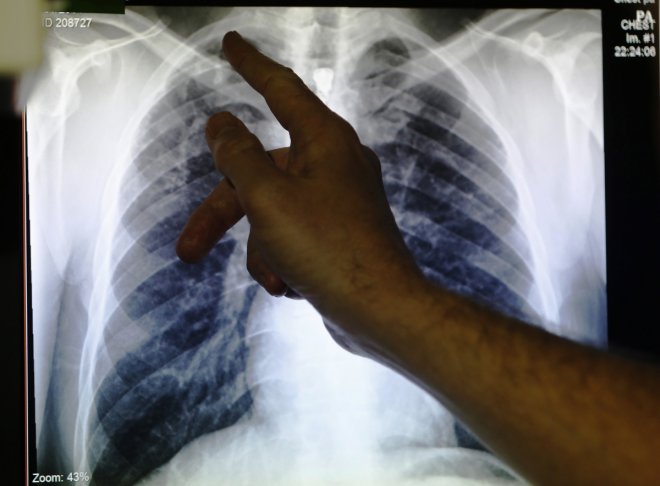
Scientists have successfully solved a decade-long mystery which could help in the earlier treatments for tuberculosis. The first antibiotic to combat one of the notorious diseases has been found by researchers.
Tuberculosis bacterium (TB) is caused by the bacterial agent mycobacterium tuberculosis, which has left almost 2 billion or more people dead worldwide.
Researchers from the University of Sussex in collaboration with the Polish Academy of Science have conducted a study on mycobacterium tuberculosis. They have found the existence of two key proteins that allow the bacterial agent to "settle low" within cells designed to destroy them.
Tuberculosis bacterium has proved fatal for more than 10.6 million people globally and 1.7 million have died at a critical stage. A quarter of the world have latent TB and that may turn into active tuberculosis within a year or after a decade later, if the bacteria comes in contact with a suitable surrounding.
No particular drug to combat the disease has been found. Most of the current drugs treatment often leads to debilitating side effects in patients such as loss of sight and wastage of muscle.
Previously, the team of researchers have discovered certain mycobacteria which repair DNA breaks by using an enzyme complex called Ligase D (LigD). However, this study brings forth a closely related protein apparatus named Ligase C which combines with other repair proteins to fix damaged DNA bases in mycobacteria genomes triggered by the attack of oxygen free radicals.
After removing LigC, the mycobacteria reduced its ability to repair and survive oxidative DNA damage. However, deleting both LigC and D bacteria lowered the survival rate indicating that eradicating these repair mechanism in mycobacteria could be utilized to create novel anti-microbial strategies to fight TB.
The scientists are hoping that the discovery of these mycobacteria would bring forth certain help in the designing that could help identify mycobacteria in their latent phase.
"Mycobacteria are incredibly resilient and can remain dormant for many years inside cells where they are exposed to significant levels of free radical damage designed to kill foreign invaders," said lead author Aidan Doherty at the University of Sussex.
"We have shown that by removing LigC and D, mycobacteria cells become much more sensitive to oxidative damage. With further investigation of these protective mechanisms, it is hoped that this research will pave the way for the development f new drugs to more successfully target mycobacteria." said Aidan.
" This study defines a new DNA repair pathway in mycobacteria, a greater understanding of such fundamental bacterial systems may lead to new drug therapies and strategies to prevent the emergence of drug-resistant tuberculosis," said Simon Waddell, Senior Lecturer in Microbial Pathogenesis at the Sussex and Brighton Medical School.








